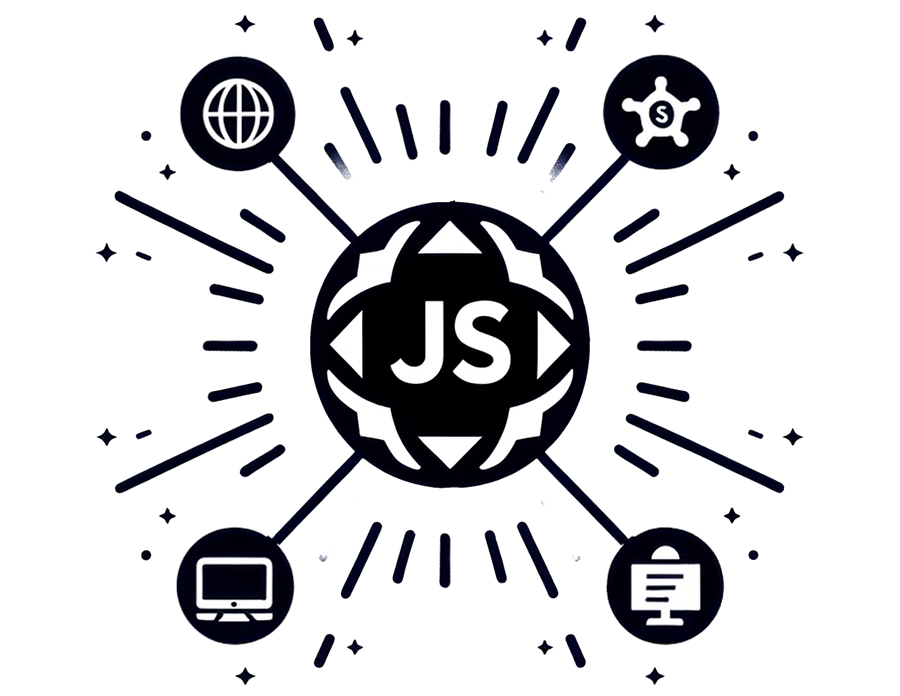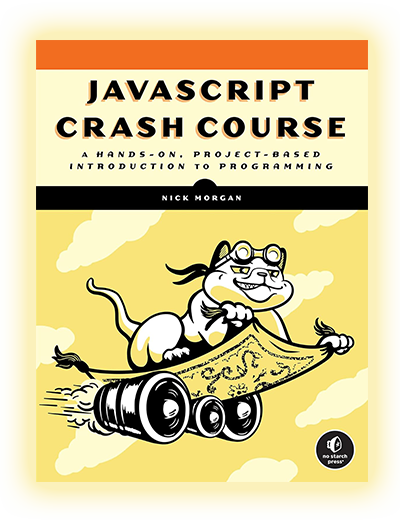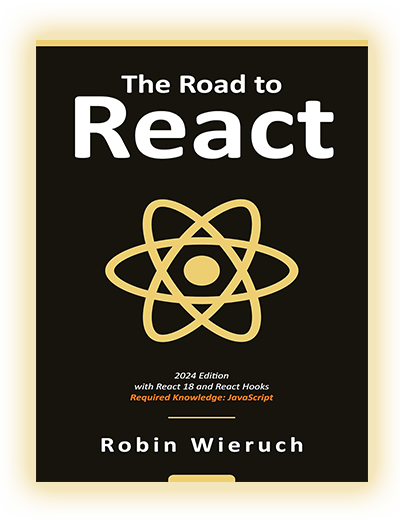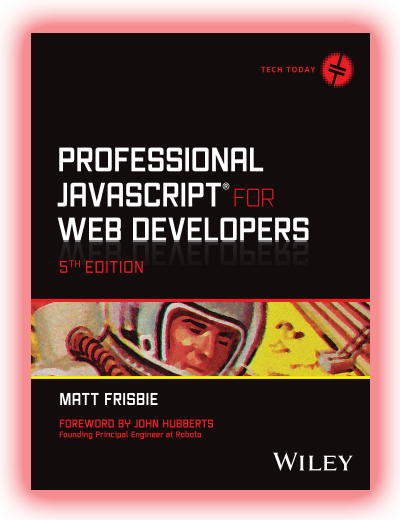Listen to the article - it is faster than reading!
JavaScript is considered a fundamental element of web development, alongside HTML and CSS. This programming language has transformed the web by adding dynamism and interactivity to it. Today, it is inseparable from the creation of modern web applications. In this article we will answer the question “What is JavaScript and Why is it used?”
JavaScript, without exaggeration, can be called the language of the web. It is a high-level, interpreted programming language used to create dynamic and interactive websites. Initially conceived as a complement to HTML to create more lively web pages, JavaScript has since become essential for both beginner and experienced developers aiming to understand the modern web.
JS enables developers to add interactive elements to web pages, such as games, animations, form processing, real-time data validation, and even the creation of complex web applications such as content management systems (CMS), e-commerce, and social networks. With the advent of Node.js, JavaScript has extended beyond browsers, allowing developers to use it for server-side software development. This blurs the boundaries between client and server code and promotes the concept of full-stack development using a single programming language.
The History of JavaScript Development
This language was created in 1995 as a simple tool for adding interactivity to website pages. It has since evolved into a powerful tool for developing complex applications, playing a central role in modern web development.

Brendan Eich
With the introduction of AJAX in the early 2000s, JS gained the ability to create applications with dynamic content updates without page reloading. The emergence of frameworks and libraries such as jQuery, Angular, React, and Vue.js significantly simplified development, providing developers with powerful tools for creating interactive user interfaces.
The standardization process of the language has also contributed to its development. ECMAScript, the standard describing the language, is regularly updated with new features and improvements. These changes contribute to enhancing performance, security, and ease of use of the language.
What New Features in ECMAScript 2023?
By 2024, the latest version of JavaScript is ECMAScript 2023, which introduced a number of significant improvements and innovations. Among the key innovations are:
- Syntax improvements for more convenient work with arrays and objects
- Support for private classes and methods for more reliable code encapsulation
- New features for working with asynchronous code
- New array methods, namely toSorted, toReversed, with, findLast, and findLastIndex
Future versions of ECMAScript are expected to continue introducing improvements aimed at enhancing performance, security, and development convenience. This programming language continues to evolve, adapting to the needs of modern web development and confirming its role as one of the key tools in a developer's arsenal.
What is JavaScript Mainly Used For?
JavaScript has transformed the approach to development, becoming an indispensable tool for creating dynamic and interactive websites. "What is JavaScript mainly used for?" - this question can be answered simply: to enhance the user experience by adding interactivity, animations, and client-side data processing logic to web pages.
In simpler terms, it makes web pages "come alive." The language allows implementing complex functions such as games, data visualization, interactive forms, and dynamic content changes without page reloading.
What Makes This Programming Language Great?
- Versatility. JS can be used for frontend, backend, mobile, and desktop applications.
- Large community and ecosystem. A vast number of available libraries, frameworks, and tools.
- Flexibility and dynamism. This language allows for the addition of interactive elements and dynamic content to web pages.
- Compatibility. JavaScript is supported by all modern web browsers without the need for additional software installation.
- Ease of learning. Although it is a powerful tool, its basics are simple enough for beginner developers to grasp.
- Innovativeness. Thanks to the continual development of ECMAScript standards, JS continues to evolve, offering new and enhanced capabilities for development.
What Is JavaScript Good For?
Many newbie developers ask the question “What is JavaScript and what is it used for?”, and the answer cannot be summarized in one sentence. In brief, JavaScript is used for:
- Developing single-page applications (SPAs)
- Building multifunctional web applications that operate in Real-Time
- Creating mobile applications using frameworks like React Native
- Developing rich internet applications (RIAs)
- To create interactive web pages
- To implement security functions and data encryption
- To implement complex user forms with client-side data validation
- To interact with web APIs and third-party services
Firstly, JS is necessary for creating interactive web pages. It allows developers to embed elements that respond to user actions, such as clicks on buttons, text input in forms, or dragging interface elements. This interactivity not only makes websites more attractive but also more user-friendly.
Secondly, JavaScript plays a central role in developing single-page applications (SPAs), where all content is loaded once, and subsequent interaction with the user occurs without page reload. This ensures a smooth and fast user experience comparable to native applications.
Moreover, JS is used in numerous libraries and frameworks such as React, Angular, and Vue.js, which simplify and accelerate the development of complex web applications by providing ready-made solutions for routine tasks. These tools significantly increase development productivity and enable the creation of scalable and maintainable applications.
JavaScript is also a key component in the development of multifunctional web applications operating in real-time (e.g., chats, games, and collaborative systems). It enables the implementation of complex client-side logic, facilitating instant data exchange and updates without the need for page reloads.
What Can You Do With JavaScript?
With JS, virtually any idea in development can be implemented, from simple functions to complex web applications.
- Creating dynamic and interactive web pages.
- Developing single-page applications (SPAs) for smooth and fast user experience.
- Building server applications using Node.js.
- Developing cross-platform mobile applications via React Native or other JavaScript frameworks.
- Creating desktop applications with Electron for Windows, macOS, and Linux.
- Implementing complex animations and visual effects on web pages.
- Developing browser-based games.
- Creating and managing asynchronous server requests for data loading without page reloading.

Web Development
In web development, JS occupies a central place, allowing developers to create complex websites. It is used for client-side logic, DOM manipulation, event handling, form validation, and asynchronous server requests via AJAX.
Frameworks and libraries based on JavaScript, such as Angular, React, and Vue, simplify the creation of dynamic user interfaces and contribute to rapid web application development.
Application Development
This programming language extends beyond the browser, enabling developers to build cross-platform mobile and desktop applications.
Using frameworks like Electron for desktop applications and React Native for mobile, developers create high-performance applications for iOS, Android, and Windows. They use a unified JavaScript codebase, significantly reducing development time and resources.
Browser Game Development
JavaScript has also found its application in game development. With its ability to create dynamic visual effects and manage multimedia content, it allows for the creation of interactive games directly in the browser. JS games can be simple, entertainment-focused, or complex, with deep storylines and advanced graphics.
Web Servers and Server-Side Applications
With the advent of Node.js, this language began to be used on the server side as well. This allowed developers to write server-side code in the same language as the client-side. This, in turn, led to the creation of full-fledged web servers, RESTful APIs, and microservices in JavaScript, providing high development speed and easy integration between client and server.
Table of JavaScript Capabilities
|
Capability |
Description |
Examples of Use |
|
Creating interactive web pages |
Adding dynamic elements and interactivity to web pages. |
Animations, pop-ups, sliders, interactive forms. |
|
Developing server applications with Node.js |
Using JavaScript on the server side to create web servers and APIs. |
Web servers, RESTful APIs, backend logic implementation. |
|
Creating mobile applications through React Native |
Developing cross-platform mobile applications using JavaScript. |
Mobile apps for iOS and Android with native user interfaces. |
|
Developing browser-based games |
Creating interactive games that run directly in the web browser. |
Puzzles, arcades, educational games. |
|
Creating web servers and server-side applications |
Developing the backend for web applications using Node.js. |
Web servers, e-commerce applications, portals. |
|
Developing desktop applications with Electron |
Creating cross-platform desktop applications using web technologies. |
Code editors, music players, messaging applications. |
|
Automation and testing of web applications |
Using scripts for automating the testing of web applications. |
Unit tests, integration tests, UI testing. |
|
Creating Rich Internet Applications (RIA) |
Developing complex and multifunctional web applications. |
Online calendars, maps, complex project management systems. |
This table demonstrates the wide range of capabilities of JavaScript across various domains of web development and programming, highlighting its versatility and power as a tool for creating modern digital products.
Conclusion
JavaScript has evolved from a simple tool for adding interactivity to websites into a powerful programming language. It now underpins complex web applications, mobile and server solutions, as well as games and desktop applications. The future of JS seems as promising as its present. With ongoing developments in ECMAScript standards, the language will continue to receive new features and improvements.
Current trends, such as the development of server technologies based on Node.js, the creation of universal applications using frameworks like React Native and Electron, and the enhancement of web application performance, indicate that JavaScript will undoubtedly play a central role in the future of web and technologies.
Frequently Asked Questions (FAQ)
What is the difference between Java and JavaScript?
Java and JavaScript are two different programming languages often confused due to the similarity of their names.
Java:
- Compiled language that runs on the Java Virtual Machine (JVM).
- Used for creating server applications, mobile applications, desktop applications, and more.
- Object-oriented language.
JavaScript:
- Interpreted language that runs in the browser.
- Used for creating interactive web pages, web applications, and server applications with Node.js.
- Prototype-based language.
What is a JavaScript framework?
A JS framework is a set of tools and libraries that help developers build web applications faster and easier. Frameworks typically provide a ready-made application structure as well as various components and functions that can be used.
Examples of popular JavaScript frameworks: React, Angular, Vue.js, Ember JS, Svelte JS, BackBone JS
What is a JavaScript library?
A JavaScript library is a set of ready-made functions and code that developers can use in their projects. Libraries are used to perform various tasks such as working with the DOM, Ajax, animation, data validation, and more.
Examples of popular JavaScript libraries: jQuery, Lodash, D3.js, Chart.js, Moment.js
What is vanilla JavaScript?
Vanilla JSt is the same programming language without using frameworks and libraries. This means that JavaScript code is written manually, without using ready-made solutions.
How to start learning JavaScript?
There are many online resources that can help you start learning JS. You can find free courses, articles, video tutorials, and interactive exercises.
What are the prospects for JavaScript?
It is one of the most popular programming languages in the world. It is used on millions of websites and is considered the key to creating interactive and dynamic web applications. The demand for JavaScript developers will only continue to grow.





